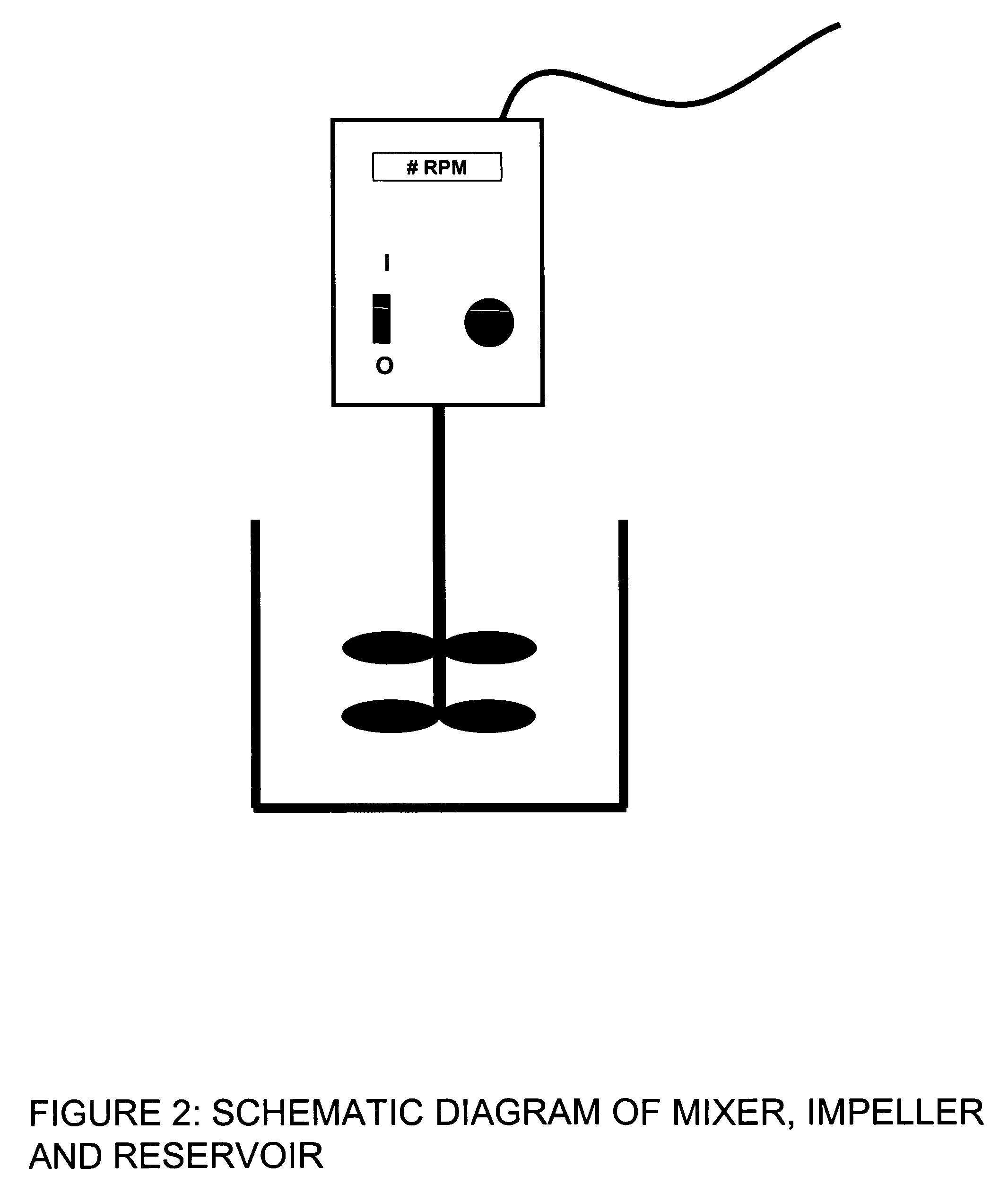Stem cells within gel microenvironments
a microenvironment and stem cell technology, applied in the field of stem cell cell biology of stem cells and their differentiation, delivery and use in regenerative medicine, can solve the problems of limiting the usefulness of repairing bone in situ, inability to control the induction and maintenance of cell differentiation,
- Summary
- Abstract
- Description
- Claims
- Application Information
AI Technical Summary
Problems solved by technology
Method used
Image
Examples
example 1
Collagen-Agarose Beads
[0030] In one embodiment of the present invention, hMSC were directly embedded into the matrix of 3D microbeads consisting of varying amounts of agarose and collagen Type I. The inventors examined factors that influence the bead production process, as well as the effects of varying matrix composition on hMSC viability and morphology. Collagen Type I was used because of its established involvement in influencing the phenotype of hMSCs, in particular towards the osteoblastic lineage. Agarose was used as an inert filler material to provide structural integrity to the beads and facilitate bead harvesting. By varying the ratio of agarose to collagen, the effect of ECM on hMSC function could be examined.
[0031] The bead production system is shown schematically in FIGS. 2 and 3. Cells were prepared for encapsulation through detachment from tissue culture flasks using trypsin-EDTA. The cells were counted and resuspended in a mixture of 5× DMEM, FBS, 0.1 M NaOH, 4.0 mg...
example 2
Gelatin Beads
[0039] Using a process analogous to that described in Example 1, gelatin beads can be made. In this case, a warm solution of gelatin and cells is emulsified and the emulsion is cooled to form gel beads with embedded cells. Because gelatin will re-melt when warmed to body temperature, gelatin beads can be stabilized using cross-linking to prevent remelting. Genipin or other agents that crosslink proteins (including transglutaminases and ribosylation) can be used for this purpose. FIG. 8(A) shows gelatin beads that have been stabilized with genipin cross-linking.
example 3
Collagen-Gelatin Beads
[0040] Using a process analogous to that described in Example 1, collagen-gelatin beads can be made. In this case, a warm solution of collagen, gelatin and cells is emulsified and the emulsion is cooled to form gel beads with embedded cells. Because gelatin will re-melt when warmed to body temperature, collagen-gelatin beads can be stabilized using cross-linking to prevent remelting. Genipin or other agents that crosslink proteins (including transglutaminases, ribosylation) can be used for this purpose. FIG. 8(B) shows collagen-gelatin beads that have been stabilized with genipin cross-linking. Alternately, the gelatin can be allowed to remelt after bead collection, thereby producing pure collagen beads (see Example 5, below).
PUM
| Property | Measurement | Unit |
|---|---|---|
| size | aaaaa | aaaaa |
| size | aaaaa | aaaaa |
| time | aaaaa | aaaaa |
Abstract
Description
Claims
Application Information
 Login to View More
Login to View More - R&D
- Intellectual Property
- Life Sciences
- Materials
- Tech Scout
- Unparalleled Data Quality
- Higher Quality Content
- 60% Fewer Hallucinations
Browse by: Latest US Patents, China's latest patents, Technical Efficacy Thesaurus, Application Domain, Technology Topic, Popular Technical Reports.
© 2025 PatSnap. All rights reserved.Legal|Privacy policy|Modern Slavery Act Transparency Statement|Sitemap|About US| Contact US: help@patsnap.com



